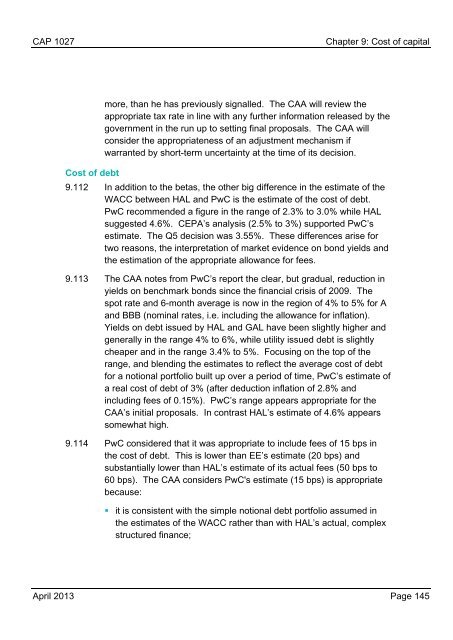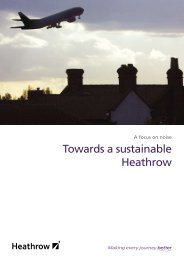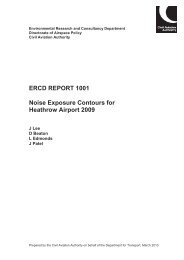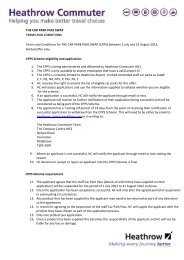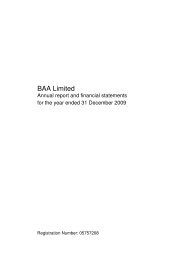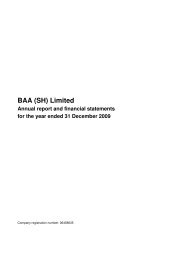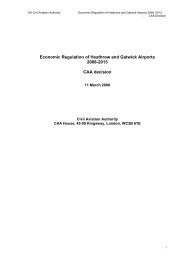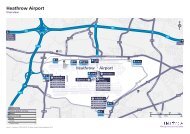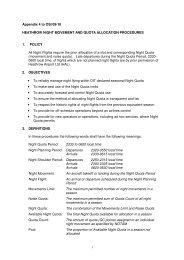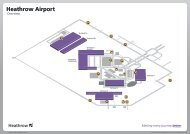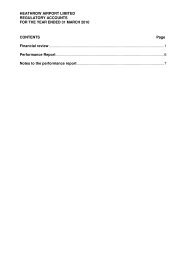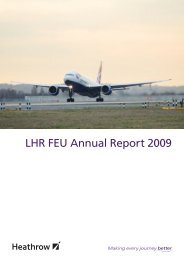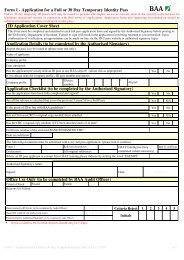the CAA said - Heathrow Airport
the CAA said - Heathrow Airport
the CAA said - Heathrow Airport
You also want an ePaper? Increase the reach of your titles
YUMPU automatically turns print PDFs into web optimized ePapers that Google loves.
CAP 1027<br />
Chapter 9: Cost of capital<br />
Cost of debt<br />
more, than he has previously signalled. The <strong>CAA</strong> will review <strong>the</strong><br />
appropriate tax rate in line with any fur<strong>the</strong>r information released by <strong>the</strong><br />
government in <strong>the</strong> run up to setting final proposals. The <strong>CAA</strong> will<br />
consider <strong>the</strong> appropriateness of an adjustment mechanism if<br />
warranted by short-term uncertainty at <strong>the</strong> time of its decision.<br />
9.112 In addition to <strong>the</strong> betas, <strong>the</strong> o<strong>the</strong>r big difference in <strong>the</strong> estimate of <strong>the</strong><br />
WACC between HAL and PwC is <strong>the</strong> estimate of <strong>the</strong> cost of debt.<br />
PwC recommended a figure in <strong>the</strong> range of 2.3% to 3.0% while HAL<br />
suggested 4.6%. CEPA’s analysis (2.5% to 3%) supported PwC’s<br />
estimate. The Q5 decision was 3.55%. These differences arise for<br />
two reasons, <strong>the</strong> interpretation of market evidence on bond yields and<br />
<strong>the</strong> estimation of <strong>the</strong> appropriate allowance for fees.<br />
9.113 The <strong>CAA</strong> notes from PwC’s report <strong>the</strong> clear, but gradual, reduction in<br />
yields on benchmark bonds since <strong>the</strong> financial crisis of 2009. The<br />
spot rate and 6-month average is now in <strong>the</strong> region of 4% to 5% for A<br />
and BBB (nominal rates, i.e. including <strong>the</strong> allowance for inflation).<br />
Yields on debt issued by HAL and GAL have been slightly higher and<br />
generally in <strong>the</strong> range 4% to 6%, while utility issued debt is slightly<br />
cheaper and in <strong>the</strong> range 3.4% to 5%. Focusing on <strong>the</strong> top of <strong>the</strong><br />
range, and blending <strong>the</strong> estimates to reflect <strong>the</strong> average cost of debt<br />
for a notional portfolio built up over a period of time, PwC’s estimate of<br />
a real cost of debt of 3% (after deduction inflation of 2.8% and<br />
including fees of 0.15%). PwC’s range appears appropriate for <strong>the</strong><br />
<strong>CAA</strong>’s initial proposals. In contrast HAL’s estimate of 4.6% appears<br />
somewhat high.<br />
9.114 PwC considered that it was appropriate to include fees of 15 bps in<br />
<strong>the</strong> cost of debt. This is lower than EE’s estimate (20 bps) and<br />
substantially lower than HAL’s estimate of its actual fees (50 bps to<br />
60 bps). The <strong>CAA</strong> considers PwC's estimate (15 bps) is appropriate<br />
because:<br />
• it is consistent with <strong>the</strong> simple notional debt portfolio assumed in<br />
<strong>the</strong> estimates of <strong>the</strong> WACC ra<strong>the</strong>r than with HAL’s actual, complex<br />
structured finance;<br />
April 2013 Page 145


